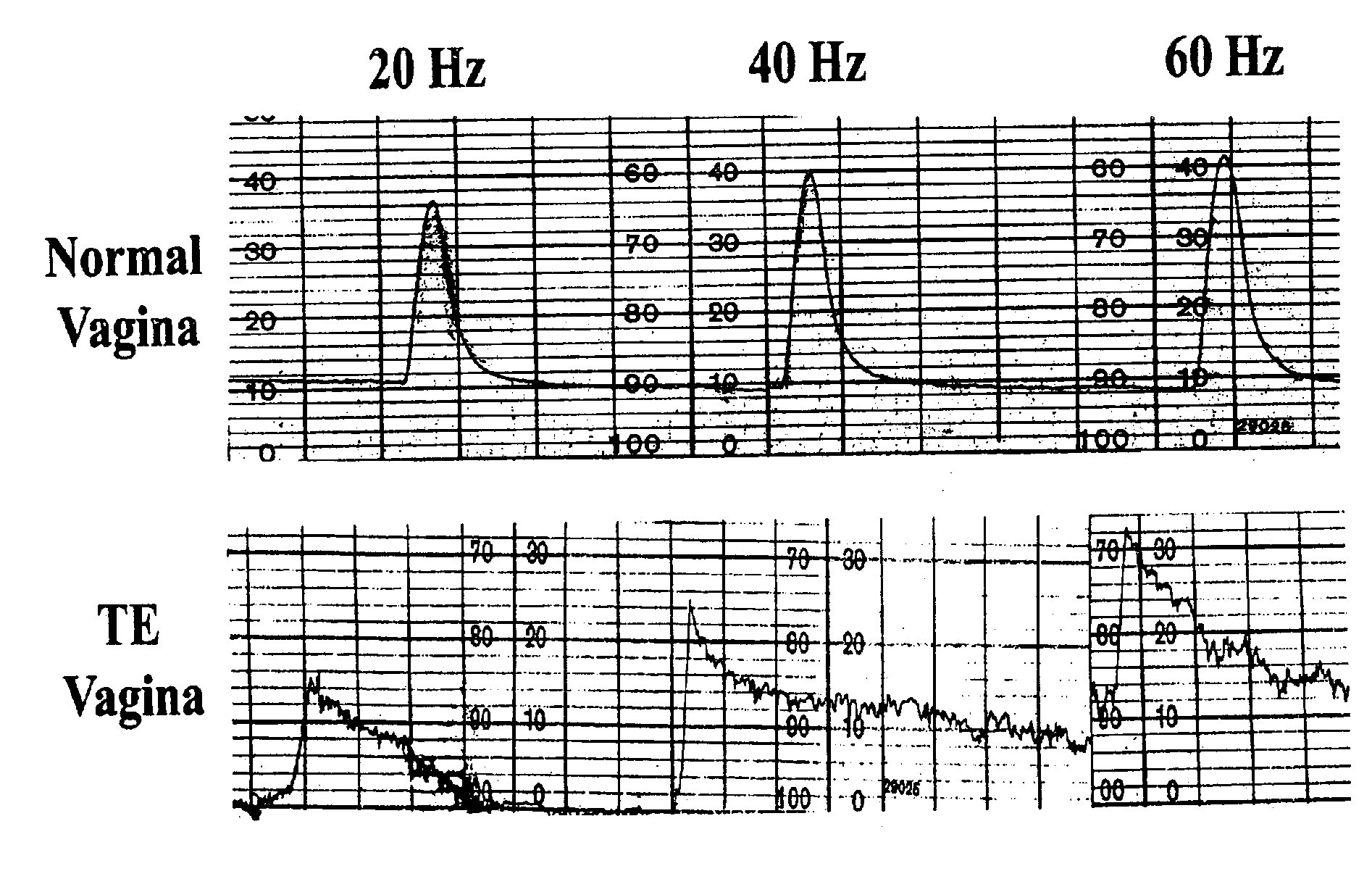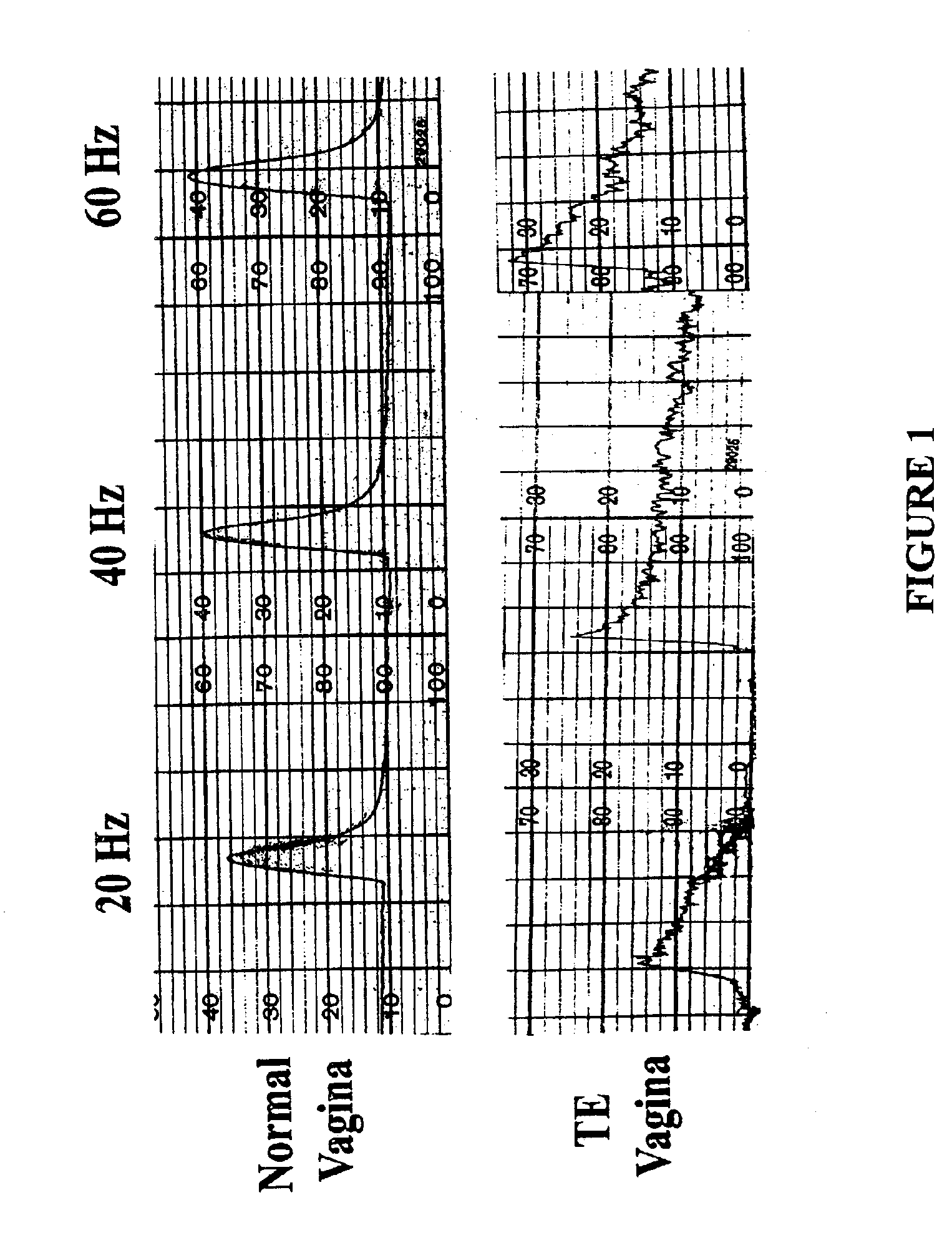Tissue engineered uterus
a tissue engineered uterus and tissue technology, applied in the field of tissue engineered uterus, can solve the problems of genital malformations that can be particularly disturbing to the patient and her family, severe genital ambiguity for both males and females, and paucity of information regarding the reconstruction of female genitalia and vaginal reconstruction
- Summary
- Abstract
- Description
- Claims
- Application Information
AI Technical Summary
Benefits of technology
Problems solved by technology
Method used
Image
Examples
example 1
Materials and Methods for Creating an Artificial Vagina
(i) Tissue Harvest and Cell Culture
[0180]New Zealand White rabbits served as the donor source of vaginal tissue. The animals were anesthetized with intramuscular Ketamine (25 mg / kg), Xylazine (2 mg / kg), and Acepromazine (0.75 mg / kg). The lower abdomen was prepared in a sterile manner with a povidone-iodine (Betadine) solution.
[0181]The vaginal tissue (1 cm2) and fallopian tube tissue were harvested through a simple, midline, transabdominal approach allowing for good exposure during the biopsy. The retrieved tissue was washed several times and the muscle and epithelial tissues were separated by microdissection or enzymatic digestion.
[0182]Smooth muscle cells were extracted using the explant method. Several muscle strips were carefully dissected from the seromuscular layer of the tissue under loop magnification. These pieces were individually placed onto culture dishes and then incubated with Dulbecco's Modified Eagle's Medium (DM...
example 2
Preparation of a Tissue Engineered Vagina
[0191]Congenital vaginal anomalies and cloacal malformations may require extensive surgical construction. Surgical challenges are often encountered due to the limited amount of native tissue available. Currently, non-reproductive tract tissues are being used for vaginal construction, despite a number of associated complications. Autologous vaginal tissue are preferable. This example describes the use of vaginal epithelial and smooth muscle cells for the engineering of vaginal tissues in vivo.
[0192]Vaginal epithelial (VE) cells and smooth muscle cells (SMC) of female rabbits were grown and expanded in culture. Both cell types were characterized immunocytochemically. Vaginal epithelial cells and smooth muscle cells were seeded onto polymers of polyglocolic acid (PGA) at 10×106 cells / cm3 and 20×106 cells / cm3, respectively. The cell seeded scaffolds were subcutaneously implanted into nude mice. The animals were sacrificed at 1, 4, and 6 weeks aft...
example 3
Complete Vaginal Replacement in Large Animals Using Tissue Engineered Constructs
[0200]The following study demonstrates that vaginal epithelial and smooth muscle cells can replicate and survive in vivo in rabbits for prolonged periods and can self organize towards seemingly normal structural orientation that are capable of producing contractile forces similar to those seen with native vaginal tissue.
[0201]Autologous vaginal epithelial (VE) cells and smooth muscle cells (SMC) of female rabbits were grown and expanded in culture. Both cell types were confirmed immunocytochemically prior to seeding the polymers. A Coculture VE and SMC's were dynamically seeded onto polymers of polyglocolic acid (PGA) at concentrations of 5×106 cells / cm3 in bioreactors. A total of 15 animals were used for this experiment. Cell seeded scaffolds were used for complete vaginal replacement in 9 animals while unseeded constructs were used for replacement in 6 animals as controls. Vaginograms were performed at...
PUM
| Property | Measurement | Unit |
|---|---|---|
| depth | aaaaa | aaaaa |
| length | aaaaa | aaaaa |
| thick | aaaaa | aaaaa |
Abstract
Description
Claims
Application Information
 Login to View More
Login to View More - R&D
- Intellectual Property
- Life Sciences
- Materials
- Tech Scout
- Unparalleled Data Quality
- Higher Quality Content
- 60% Fewer Hallucinations
Browse by: Latest US Patents, China's latest patents, Technical Efficacy Thesaurus, Application Domain, Technology Topic, Popular Technical Reports.
© 2025 PatSnap. All rights reserved.Legal|Privacy policy|Modern Slavery Act Transparency Statement|Sitemap|About US| Contact US: help@patsnap.com



